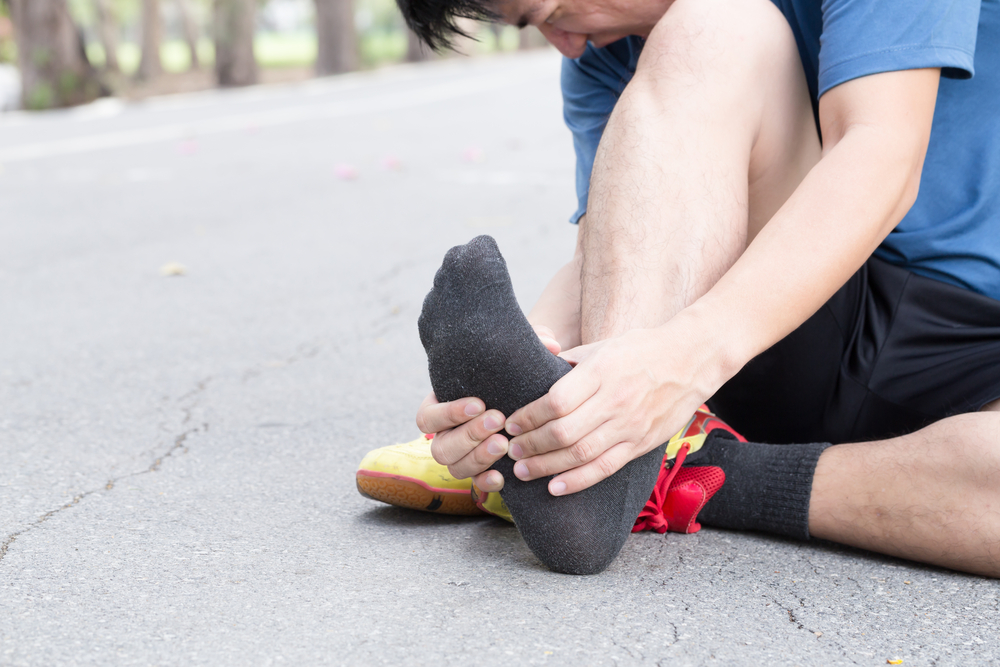Plantar Fasciitis is inflammation of the plantar surface of the foot. The plantar surface refers to the bottom of the foot in which a long band of fascia connects from the calcaneus (heel bone) to the base of the toes. Fascia is a long fibrous band of tissue that surrounds muscle to create stability reinforces tissue and to allow for prolonged use and function. Plantar fasciitis is a very common injury classified by difficulty ambulating for the first few steps of the day upon walking, causing severe pain in the heel of the foot.

How Does Plantar Fasciitis Happen?
Plantar Fasciitis is generally more common in females, patients who are overweight or work in a job that requires long periods of time on feet or periods of time walking on hard surfaces. Additionally, patients that may experience plantar fasciitis are those who are runners or jog for recreational exercise. These patients are more prone to have the injury secondary to tight calf musculature that will limit the ability of the ankle joint to fully move through the entire active range of motion. When there is a limitation in the ankle joint there is more propensity for pulling on the fascia, which over time can create inflammation, restrictions/trigger points in the issue and altered foot mechanics.
Symptoms
Usually pain in the bottom of the foot, difficulty walking, tightness in calf musculature, and inability to stand for long periods of time.
Treatment
Physical therapy treatment consists of stretching the gastrocs/soleus and Achilles tendon to regain length in the fascia and take pressure of the surrounding structures, which may be involved. Limiting the amount of time the patient may be on their feet will limit the pain, a physical therapist may recommend a night brace or walking boot to unload the foot and allow for inflammation reduction. Physical therapists will apply ice to the area to decrease swelling/inflammation, massage to decrease trigger points and pain, electrical stimulation, joint mobilizations to ensure proper joint mechanics and that joints are properly aligned, and exercises to strengthen the ankle joints and surrounding joint to ensure that muscles will support the joint properly.
Patients may also benefit from orthotics to ensure improved metatarsal arch support and proper footwear to support the foot type the patient may have.
Overall patients will generally improve condition in 4 to 6 weeks and must be diligent with inflammation control, stretching, and limiting amount of activity until the pain decreases and muscle length returns.
Our clinic also has two of the newest technological breakthroughs in physical therapy, the Alter G treadmill and the Zimmer eNpulse Radial Shockwave. Both have proven effective in treatment of Plantar Fasciitis, and are used during treatment in our Bethpage office.

